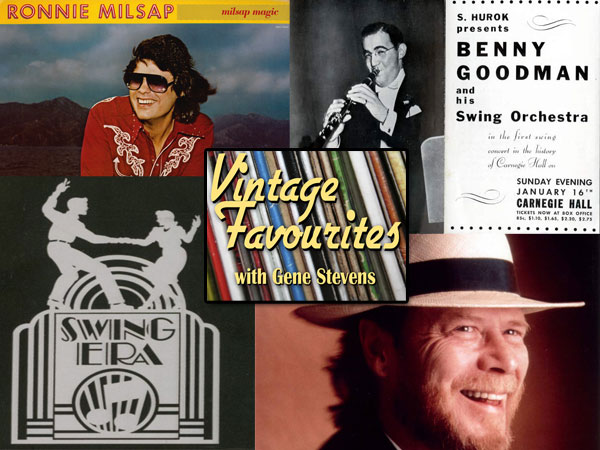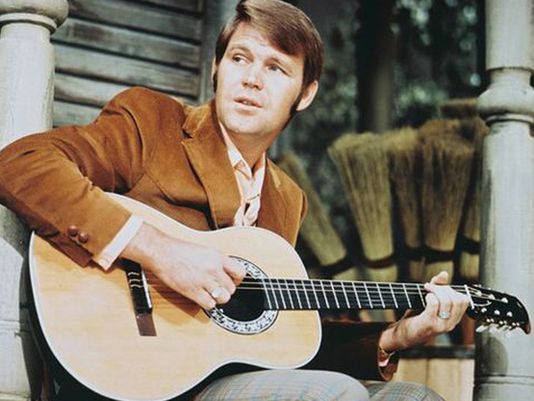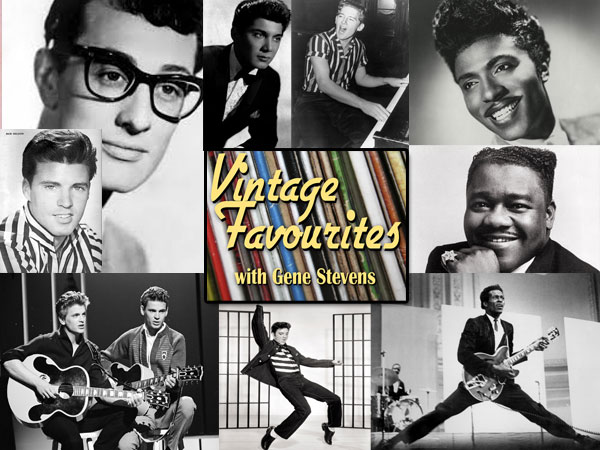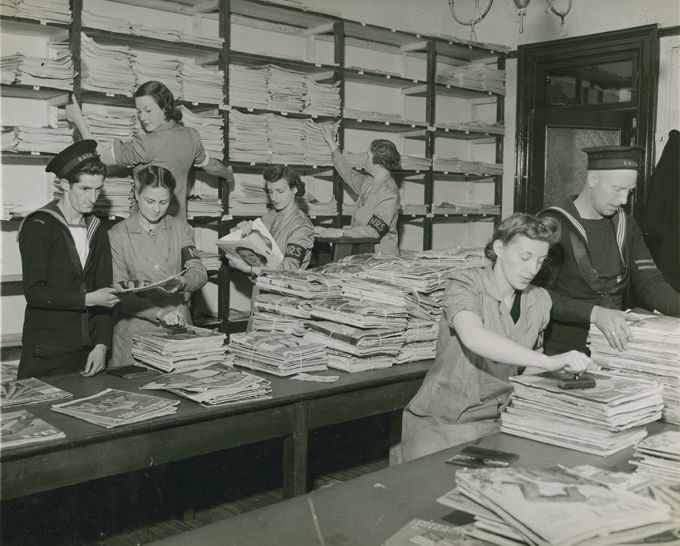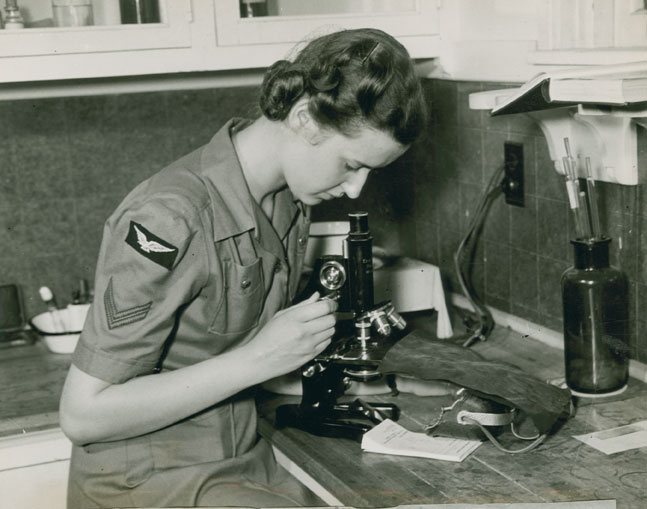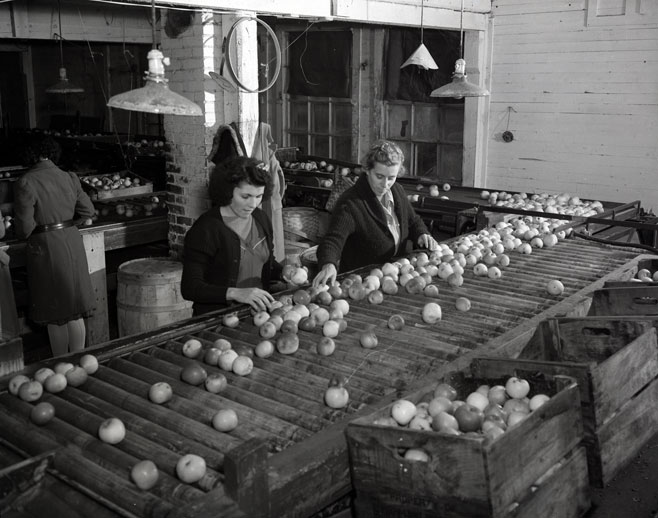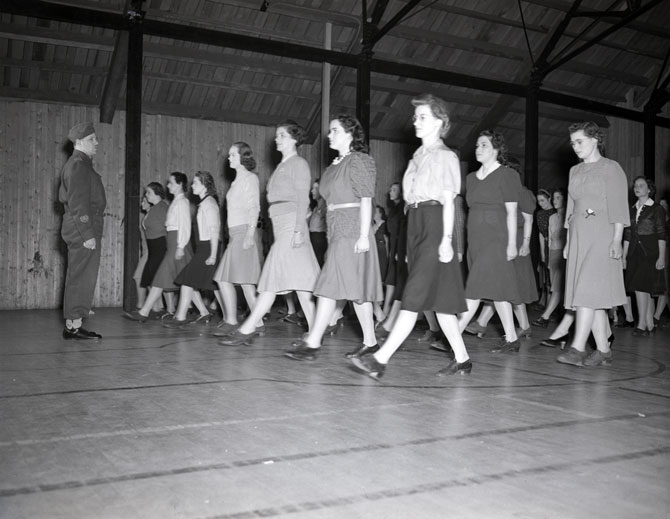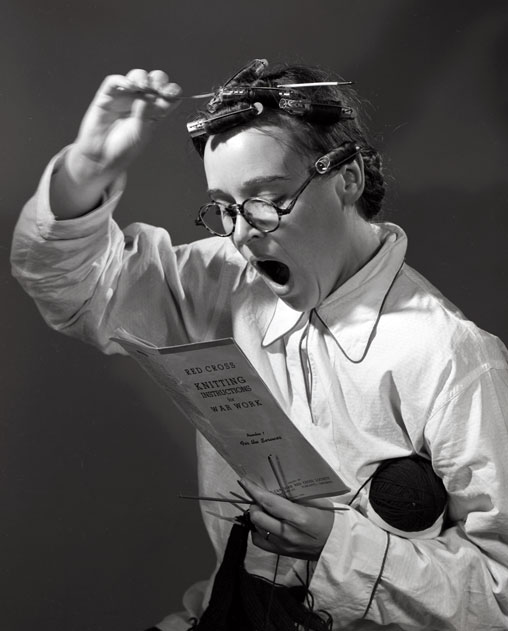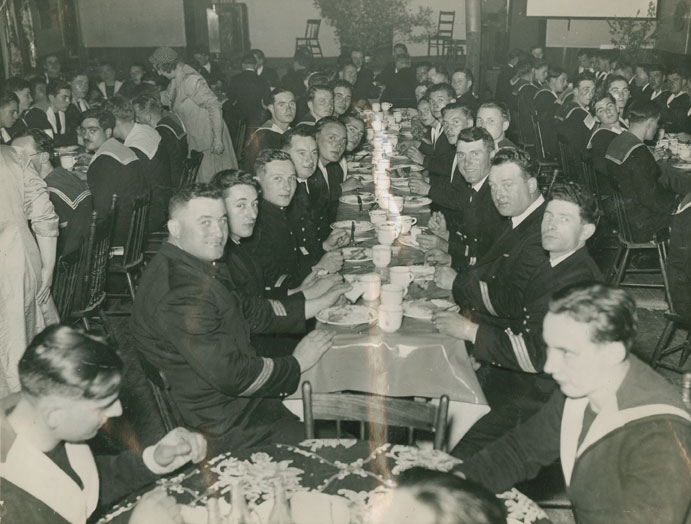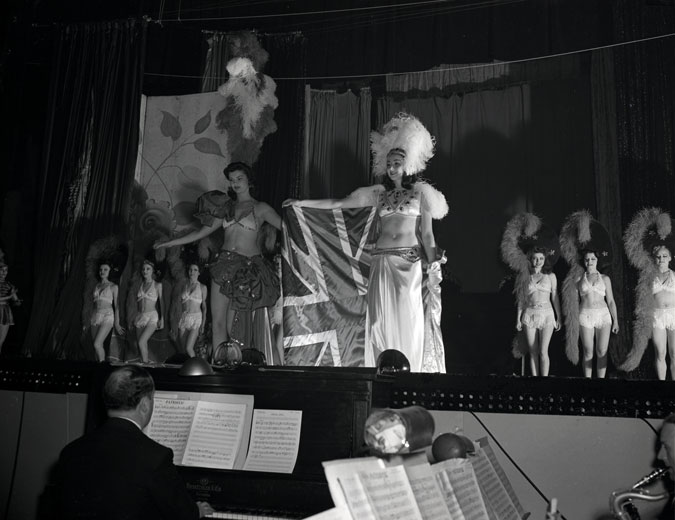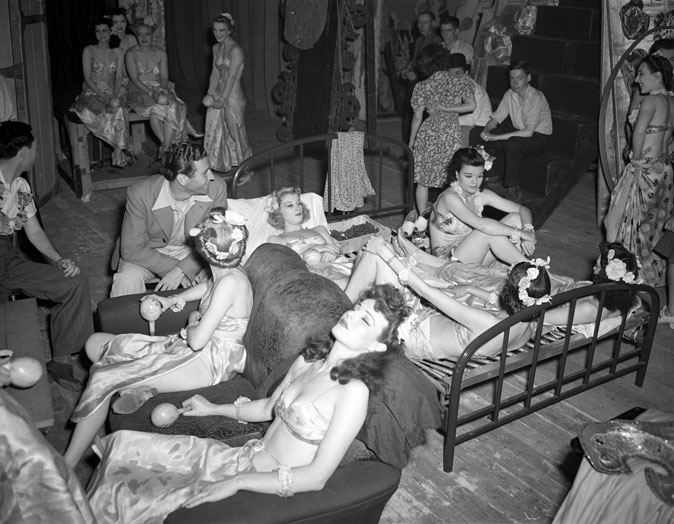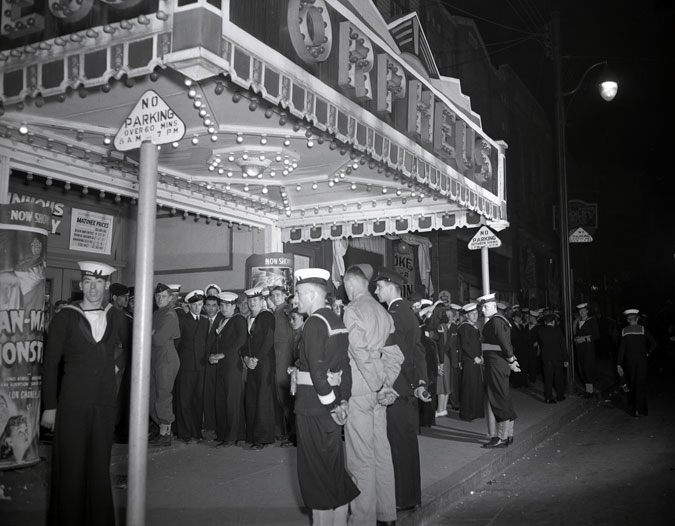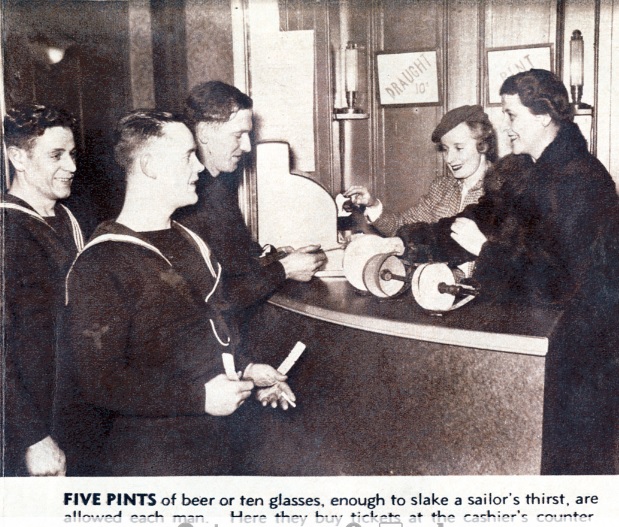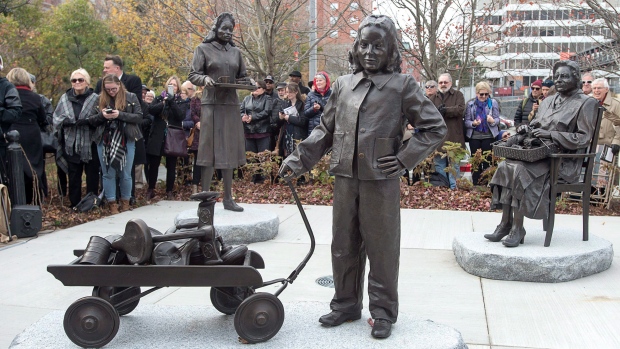Gene Stevens. Music Collector, Historian, DJ and Vintage Traveller. These are just a few of the titles for Zoomer Radio’s resident host of Vintage Favourites and the subject of today’s interview.
Note: This interview is chalked full of incredibly interesting information (and I’m not just saying that because it’s on my blog, it’s great!), so make sure you set aside some time to read all about Gene and his adventures.
Before we begin our interview here is a brief bio on Gene:
- born and grew up in Toronto … record-collector and, prior to broadcasting career, a live DJ for dances/weddings, etc. (first radio gig – University of Toronto Varsity Radio show host.)
- In broadcasting since 1972 – as on-air host, music director, promotion director, program director and general manager in Leamington, Peterborough, St.Catharines, Brampton and Brantford, before Toronto.
- Previously: AM 740’s first Program Director from launch in 2001 through 2011.
- Previously: Program Director at Toronto’s EZ Rock 97.3 1995-2000, and various other positions including Program Director of Toronto’s 590/CKEY in late 80s.
- Host of ‘Vintage Favourites’ Sundays 2:00 – 4:30pm. (on-air since March 2007).
- Gene is a music collector and has often lectured to university groups on the subject of pop music and culture. He has traveled the America’s and Europe, and loves history and film.
Part 1: Zoomer Radio (Part 2 (below part 1) will focus on fun vintage miscellaneous topics)
Q. You have worn many hats in your career, what do you currently love about being a radio host? What do you love about doing the ‘Vintage Favourites program?
A. My first passion was playing music for people. I took my 45s to house parties as a teenager and soon realized I could ‘run the party’, from a corner turntable. Once I started learning about the music’s history, I loved to tell stories about the songs and the artists. From those basement house parties and then spinning records at weddings, I wanted to move to the next level, and play my songs to a huge audience as a show-host on a radio station.
The only way to really ‘manage the show’ was to be the station’s Program Director. At my third station (St.Catharines) I was appointed Program Director at 25, and took on the job – with all its challenges and demands – really, to play what I thought was the best music selection for a particular radio station’s targeted audience. It’s been such fun, and so very fulfilling, to research listeners’ preferences, differentiate your station from others, put the finest programming together, and to ultimately satisfy the audience, day in and day out.
After 40 years in management, with various radio stations in various cities, working through the changing times and technologies, and having completed ten years as the first Program Director of AM 740, I wanted to shed the management work in 2011, and return to my original passion – to tell stories about the music I love. I wanted to stay ‘on the Zoomer team’ and I’m truly fortunate that our founder Moses Znaimer – who’s a fan of ‘Vintage Favourites‘ – invited me to continue the show I had launched back in 2007.
What I love about hosting ‘Vintage Favourites’ – is the total freedom I’ve been given and the trust our management has in me. I’m inspired to explore the exciting and fascinating musical times we’ve lived through, and tell its countless stories for our Zoomer audience.
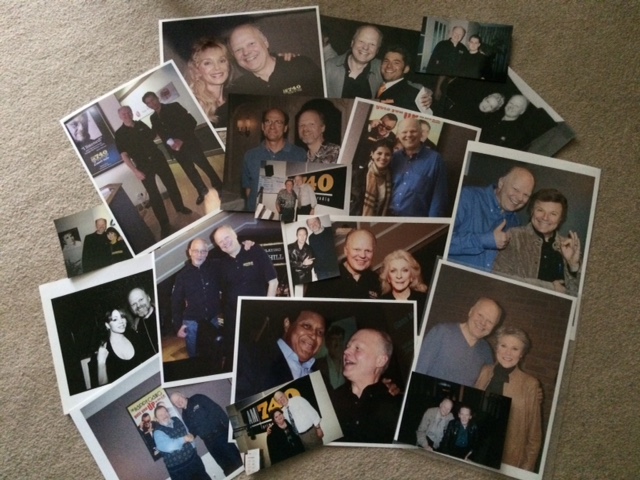
Q. Do you have a favorite Vintage Favourites Episode?
A. Since launching in 2007, I’ve created over 560 editions of ‘Vintage Favourites’ – in addition to over two thousand short and long-form music features during my career – so it’s difficult to pick a favourite episode. I really enjoyed the 2016 series of ‘The Vintage Year‘, where each week I put the spotlight on a specific year between 1930 and 1979, highlighting the top news, sports and entertainment stories along with the biggest songs of each year. That was fascinating. But then, I also loved last year’s ‘Music City‘ series, spotlighting songs about cities like Chicago, New York, San Francisco, LA, Detroit, New Orleans, Memphis, Liverpool, London and Toronto.
There was a show inspired by our founder, Moses Znaimer, about God – pop songs about religion, and ‘the big issues’. Then there was the show with math professor Jason Brown, invited to speak at IdeaCity, who discovered exactly how The Beatles created ‘that note’ at the start of ‘A Hard Day’s Night‘ – although I never liked arithmetic, I loved ‘The Mathematics of Rock’n’Roll‘ edition (Watch Jason’s talk HERE). Another stand-out show was the 50th anniversary of JFK’s assassination, interviewing our ‘Conspiracy Show’ host Richard Syrett, and playing songs about Kennedy. I suppose one of my real favourites is telling the story of how rock’n’roll evolved – tracing it back to early R&B, even earlier to the late 1920s, and even earlier to 1913’s ‘The Rite of Spring‘ by Igor Stravinsky and the uproar it caused. There are many ways to tell that story, and I look forward to telling it again later this year.
Q. You were the program director at the beginning years of Zoomer Radio, how has the station changed since 2001?
A. Well, everything is always changing – right? The only constant is ‘change’. That’s a law of nature, and it certainly applies to radio stations. There are three key areas of change. First is the age of the ‘target audience’ and the passage of time, second is ‘texture’, and third is ‘focus’. I’ll give you a brief overview.
Our purpose was – and remains – to be that unique station serving a ‘older demographic’. The so-called ‘target audience‘ (the age group a station hopes to primarily attract) when we launched was 50+. In 2001, that meant someone who was aged 15 in 1966, or earlier. At present, Zoomer Radio is designed to appeal to a 45+ audience, and that means someone who was aged 15 in 1988, or earlier. I mention ‘age 15’, in reference to a long-standing research theory that says people form their primary music tastes around that age; songs from our teenage years remain ‘special’ forever. Of course, our musical tastes mature into adulthood, and we will appreciate, and even love, music from later years – but those teenage songs will always appeal in a different way. So, the first difference is a result of the time that’s passed since our launch; the 15 year old of 1966 and of 1988, have a different tolerance/appetite/expectation of music.
And one of those key differences can be described as ‘texture‘. Put simply, someone who grew up with the electric guitar as the primary source of pop music has a different appreciation and acceptance of music, than someone who did not. (In the decades to come we’ll see that same discussion over growing up with ‘rap’ music) Our station’s ‘texture’ was originally ‘softer’ and ‘gentler’; and the ballads gave us a romantic content in a medium tempo. We used to say “we don’t rock, we swing.” That’s now changed to a more uptempo, energized ‘texture’.
Finally, there is the difference in the ‘focus‘ of the music mix. In our early days I adhered to the conventional wisdom of a narrow focus – every successful radio station had a clearly defined and consistent ‘sound’ you could distinguish instantly. That wisdom said your advertising and promotion bring listeners to sample your sound, and hopefully decide to stay; that sound needed to be as consistent as possible to maximize one’s marketing efforts, and to continually ‘deliver on your promise’.
However, the past decade of increasing digitization, has given us almost limitless choice, on demand. Shorter attention spans have led to less patience, and a kind of restless energy – while a musical smorgasbord is only a click away in our omni-present ocean of choice. One’s music tastes are constantly being teased, satisfied, and altered. Put your personal music library on ‘shuffle’, and you’ll bounce around the various music genres that comprise your accumulated personal experiences with music.
That’s now reflected in Zoomer Radio’s wider focus, which I might describe as ‘diffused’ – offering the listener a ‘shuffle-like’ ever-changing palate of musical memories, from the many genres in our station’s huge music library. After our launch, we played ‘All Time Favourites‘, represented pictorially as Frank Sinatra, Barbra Streisand, Elvis Presley. In a typical half-hour you’d hear John McDermott, Neil Diamond, Bobby Darin, Nat King Cole, Michael Buble, Anne Murray and even Glenn Miller.
Today we play ‘Timeless Hits‘, and our menu is much wider, with more unexpected ‘surprises’; a typical half-hour could feature Beatles, Four Tops, Guess Who, as well as Meat Loaf, Dixie Chicks, April Wine, and even Jimmy Durante. In a nutshell, our station has evolved to reflect the changing times, demographics and tastes.
Having said all this, I want to add, the station launched with – and continues to this day – with a dazzling variety of specialty shows that satisfy various groups (and sub-groups) of music fans with big band, Irish, British Invasion, and blues programs, rock’n’roll oldies, countdowns, celebrity profiles and themed programs. That genuine effort to offer substantive and compelling content has never changed, and I believe, is a defining characteristic that separates us from ‘the rest’.
Q. If Zoomer asked you to create a new radio program right now, what would you create?
A. I’m very satisfied with the wide latitude of music genres, themes, and selections I now explore weekly on ‘Vintage Favourites’. The station already has so many wonderful and long-running specialty programs (many of which I launched) … it’s pretty hard to find a ‘missing niche’. But – since you asked – I think the 1950’s and early 60s would be fun. A program dedicated to the pre-rock’n’roll pop music of that era, as well as that innocent early ‘pre-Beatles’ sound.
Part 2: Miscellaneous Vintage Questions
Q. My readers are collectors of vintage items; and I have read that you’re a collector of music. How long have you been a collector and can you let us know what your favourite item or most prized possession is?
A. Ah collecting is such a blessing – and a curse. I first caught ‘the bug’ in the late 1960s, collecting 45 rpm records. First came the CHUM Chart hits of the day – as well as the CHUM Charts themselves. I eventually collected all the CHUM Charts from the early 60s through to their end in the mid-80s. Alas, I stupidly marked many of them and glued them into scrapbooks – immediately devaluing them as ‘collectables’. I did the same – marked my name – on many of my earliest 45s.
Later came the trolling through dusty record store basements, private collections, and the insatiable acquisition of new songs, and the endless search for ‘holy grail’ oldies.
I learned to respect the collection, and accumulated hundreds of vinyl albums and 15,000 45s – all neatly jacketed and much-loved. I learned so much about music, and collecting – until one day, vinyl died! The CD era had arrived, and when I moved into Toronto, I could no longer afford to dedicate an entire room to my vinyl. And there was family and children, and other priorities. Besides, ‘vinyl was dead’!
So I built up my CD collection, and sold my vinyl – often a bargain-basement prices. Thus I learned about the ‘curse’ of collecting – its obsessiveness is only matched by the pain of letting it go. Then came the Internet, streaming, and putting your music onto your laptop’s hard-drive – huh – no more need for CDs either? How many times did I let the industry (and technology) fool me into buying the same songs in newer ‘formats’? So don’t even ask me how I feel about the ‘Return of Vinyl’ – Bah, humbug!
My prized possessions are some early records including ‘A Whiter Shade of Pale‘ (my first purchase), and the many I have with artist autographs on them, along with a pretty decent CD library with artist autographs, some signed books and plenty of photos. One of my ‘surprise favourites’ is a hard cover copy of ‘Papa John‘ – autobiography of Mamas and Papas’ John Phillips, who signed it: ‘To Gene. This is the last damn book I’m signing.’ Ha – what a character he was.
Photo Caption: Gene with some of his collection: Beatles Rarities, Elvis in Concert and Chuck Berry live, and that little 45rpm. is ‘A Whiter Shade of Pale’ – Gene’s first record. Behind are some of his prized records – some autographed – others, just ones Gene loves, and (still) loves to look at in his living room.
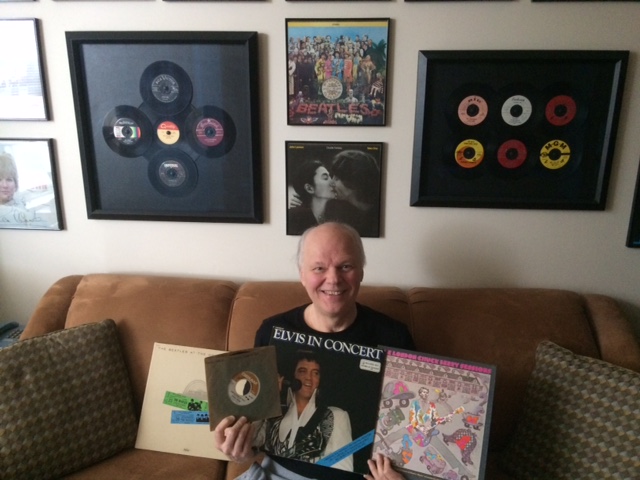
Q. If you could interview one musician that is currently no longer with us, who would it be and why?
A. A fascinating question: My first (and shakiest) interview was while a student at U.of T.’s Radio Varsity, I was asked to interview Kelly Jay, of Crowbar. It was 1971, and Crowbar was having a big hit with ‘Oh What a Feeling‘ – and I was scared. Kelly couldn’t have been nicer – virtually carrying the interview by himself.
Over my career, I was rarely the go-to guy for interviews – I tried to schedule the stars to speak with our strongest on-air hosts – and that wasn’t me. But in all those years, and the many various meetings, I’ve been blessed to meet and chat with everyone from Tony Bennett to Phil Collins, The Everly Brothers to Julian Lennon, Michael Buble to Anne Murray and so many more.

Who would I like to talk with – who’s no longer with us ? Well, Elvis comes to mind, of course. But so does someone like Sam Phillips, who owned SUN Studios – can you imagine the stories? Yeah, I’d like to chat with Sam Phillips – about Elvis and Roy, Jerry Lee and Johnny Cash, and how it was in the south, being among the few who’d work with Blacks and whites, and feeling the change coming, and catching ‘lightning in a bottle’ that July night in 1954 when he recorded ‘That’s All Right’ with Elvis, and Scotty and Bill.
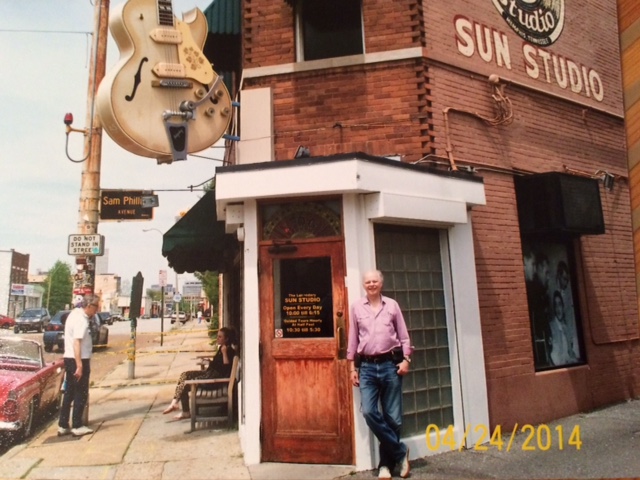
Photo Caption: Inside the studio. Gene is standing at precisely the spot (It’s marked by an ‘X’ on the floor) where Elvis stood while recording ‘That’s All Right’ and the other songs at his first session July 5, 1954. Note the technician’s booth behind the glass was behind Elvis – so he wouldn’t be distracted.
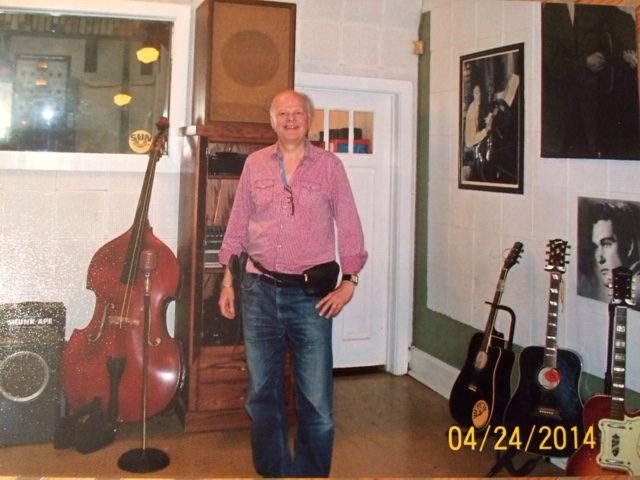
Q. 2017 was a year of loss in the music (and film industry) and you recently did an ‘In Memoriam’ show discussing all the musicians we had lost this past year. Which ones in particular hit you the hardest and why?
A. Every death is sad, and a loss – knowing a real family somewhere has lost their loved one, while we fans will never again hear anything new from him/her. I think the death of Glen Campbell moved me the most because of the cruel ravages of Alzheimer’s – a brilliant musician, terrific entertainer and great singer, who faded away – from his family, friends, fans and his own fantastic life-story. That really is sad.
Q. It’s a Saturday Night in Toronto, where do you go to listen to live music? Do you have any bands or venues in the city that are your favourite that my readers should check out (I’m particular to Grossmans Tavern and the Cadillac Lounge)?
A. My very first concert was Lighthouse in St.Michael’s College high school gym, and soon after, I saw my first arena show – Creedence Clearwater Revival at Maple Leaf Gardens. Once I got into ‘the biz’ I was privileged to see so many shows in huge venues and tiny intimate cabarets. I also spent precious hours waiting backstage to glimpse some star for a 15 second handshake and photo, or autograph. Nowadays I seldom see live shows. Among my favourite spots are the CNE Bandshell – I’ve gone to the EX every year of my life! The Cameron House is delightfully intimate, and I liked The Cadillac Lounge. And, really, does any place sound as good as Massey Hall? I remember singing on that famous stage – OK, I was in my high school choir and it was the Kiwanis Festival – but still…
Photo Caption: Levitt Shell stage – formerly called The Overton Park Shell – in a large downtown Memphis park – the location of Elvis’ very first concert July 30th, 1954. Elvis was last on a bill topped by country crooner Slim Whitman along with Billy Walker and The Louvin Brothers. He sang two songs: ‘That’s All Right’ and ‘Blue Moon of Kentucky’ – the songs he had just recorded July 5th,and were just starting to get local radio airplay. Elvis played the Shell later that same summer and again in 1955 when he headlined for another SUN Records artist who was making his own first-ever live performance – Johnny Cash and the Tennessee Two.

Q. I saw on the Zoomer website that you did a program on why you felt that 1957 was the best year for Rock n Roll (The 50’s in a nutshell were pretty awesome)? Can you summarize for this interview why you felt this way?
A. Although I was only 6, and still a decade from starting to listen to radio (yeah, a late bloomer) … I’ve come to appreciate how massive rock’n’roll was in 1957. That was the year this new music for kids really broke through. ‘That’s All Right‘ was ‘the big bang’ in 1954; ‘Rock Around the Clock‘ was the first #1 hit in 1955, and Elvis broke through in 1956 … but it all came together in 1957 – Elvis was ‘The King’, Buddy, Jerry Lee, Fats, Chuck, Don & Phil – they all had hits, Sam Cooke gave us soul, and ‘American Bandstand’ went national, bringing rock’n’roll into every living room, and Ricky Nelson became our first TV idol. It would never again be so pure, so powerful, so precious. In 1958, Elvis was drafted, soon after Buddy died, Chuck was jailed, Jerry Lee married his 13 year old cousin and was banned, Little Richard found religion, and ‘payola’ showed how commerce was taking over; ‘American Bandstand’ would bring on a second wave of pretty boys, perfect for the TV sponsors. By the time The Beatles revived us after JFK’s death, rock’n’roll was ready for its maturity as ‘rock’ – darker, harder, heavier, cerebral, ethereal, surreal, and … and changed. 1957 was ‘the best year’!
Q. Beyond music, you also are a big film buff. Many of my readers, including myself are lovers of film particularly vintage movies (I’m a big MGM Musical fan). What is your favorite genre and why? And of course we would love to know what your most favorite movie of all time is?
A. You’re right, I love the movies. In fact, if anything’s taken some of my time away from music, it’s the movies. My girlfriend Trudy, and I, see at least one new movie almost every week, and probably rent another. Favourite movies are a bit like favourite songs – tough to decide, and easy to change your mind by mood – but here goes: Among the classics I love ‘Casablanca‘ and the film noir genre – ‘Double Indemnity‘ and ‘Postman Always Rings Twice‘ are such watchable classics. My all-time favourite is probably ‘Raiders of the Lost Ark’ – and although I own the Indiana Jones box set, I never watch it. That’s the funny thing about favourite movies – at least for me – I don’t choose to actually watch them. I’d rather spend that time watching something I haven’t seen. Among recent movies, I loved ‘Star Wars – Last Jedi‘ and ‘Get Out‘ was good, but my favourite of ’17 is the less-well known British award winner ‘I, Daniel Blake‘. A ‘little’ film about British bureaucracy – gritty, stark, sad, and rewarding.

Q. Several of the blog posts I do over here on the Vintage Inn, has a 1920’s-1960’s‘Canadiana’ history focus, I just love learning and sharing info on less talked about topics like vintage dance halls, women on the WW2 home front etc. If could go back to one moment in history and watch it happen as an observer what would it be and why?
A. History is my favorite subject; I love history books, historic films, and, of course – the history of popular music ! I’ll give you two answers; the first relates to music. I’d love to be there in Liverpool’s Cavern Club, on one of those sweaty nights in 1962, when The Beatles were just breaking, and ‘the in-crowd’ was right there. That’d be fun. I’d also love to be a ‘fly on the wall’ during the Warren Commission hearings, to hear just how the ‘story’ of the JFK Assassination was manufactured – it’s a defining moment in a Boomer’s life, and for many of us – me included – that mystery confounds us to this day. Who, how, and why?
Photo Caption: Hamburg Germany, with Gene standing before the Indra Club, located on that famous street (Grosse Freiheit, which translates as ‘the great freedom’), in the seedy ‘red-light’ Reeperbahn District. The brass street marker identified ‘The Indra’ as the first of several Reeperbahn clubs John, Paul, George, Stu (Sutcliffe), and Pete (Best) played. The first Beatles performance in Hamburg (Aug.17th, 1960), 2 years before their first UK recordings gave us ‘Love Me Do’.

Q. I have heard that from your travels you have many fantastic stories. It would be great if you could share 1 or two of those stories that my vintage readers and zoomer listeners would love to hear.
A. My travels have taken me across North America and Europe several times these past 5 decades – and as a history buff, I’ve been drawn to places both famous and infamous, places of great performance and terrible tragedy. But staying with music – among my favourite places included the Elvis pilgrimage from his birthplace in Tupelo, to various locations in Memphis, including Graceland, SUN studios, the Overton Park Shell, and Beale Street. I enjoyed visiting Hamburg’s naughty Reeperbahn district to check out the places where The Beatles first played during the early 60s. I’ve stood in the decaying shell of the punk music palace – New York’s CBGB’s, and country music’s hallowed Ryman Hall, Cleveland’s Rock’n’Roll Hall of Fame, LA’s Grammy Museum, Detroit’s Motown studio, Chicago’s Chess Records studios and London’s Marquee Club.
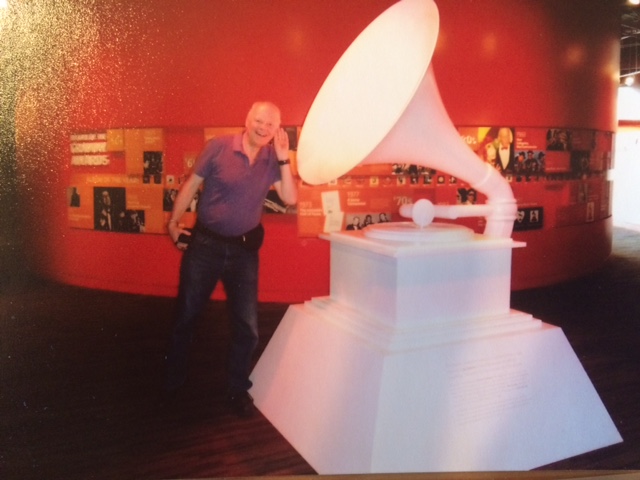
Here’s one story in some detail:
The legendary Les Paul – an inventor of the electric guitar and hit-maker of the early 1950s – was a regular listener, from his New York home, during our early years as ‘AM 740’ in the 2000s. This station has a huge night-time signal blanketing much of the north-east. One evening Les Paul called in to chat with our on-air host Bob Sprott, and that started quite a friendly relationship between them. This living legend – Les Paul – phoned in several times and for delightful chit-chat with our own, very knowledgeable, ‘legendary host’. It so happened, I was planning a vacation trip with my twin daughters to New York, so I decided I’d drop into the Iridium Jazz Club on Broadway where Les Paul entertained weekly. My girls and I took our seats, and soon, in walked the man himself – who had just recently played the room with an adoring Paul McCartney. There were no guest-stars that night, and Les, approaching age 90, would only do a fairly short set. But afterward, he sat and met every person who wanted to see him – that certainly included my daughters and me. He spent a generous amount of time – and confirmed my question about his car accident decades earlier, which broke his arm so badly it had to be permanently set – as he directed – in a guitar-playing position. And, yes, he signed a t-shirt for our Bob Sprott, and posed for a nice photo with my girls and me – one for the albums, and for the ages! Les Paul – one of only a few inductees to the Rock’n’Roll Hall of Fame with a permanent exhibition.
Q. Last Question: Sun Records vs Chess Records who had the better lineup in your opinion (or is this an impossible question)?
A. Hah – chocolate or strawberry (neither studio was ‘vanilla’ !) Elvis or Chuck Berry? Are you kidding? That is impossible. I think it comes down to personal taste. My tastes lean toward SUN – I love rockabilly, and it was ‘created’ right there. But one of history’s most famous R&B classics – ‘Rocket 88‘ by Jackie Brenston and Ike Turner, was recorded at SUN Studio by Sam Phillips in 1951. He then licensed it to CHESS Records in Chicago where it was distributed. So, one of the all-time greatest R&B classics actually belonged to both SUN and CHESS. SUN gets my nod – because it had a wider scope, doing R&B, rockabilly, rock’n’roll, and country … whereas Chess focused on blues and R&B.
I was fortunate to tour both legendary locations. Another story?
My girlfriend Trudy and I visited Chicago a few years ago, and by the time we got to 2120 S.Michigan Avenue, the doors were closed, and I was left peeking into the storefront window. As the custodian was leaving, he saw me looking forlorn – and my Trudy asked him to ‘puhleeze’ consider letting me in – ‘just for a little peek’. He couldn’t refuse – and took me in for a whirlwind – and personal – tour of where the Chuck Berry/Bo Diddley/Muddy Waters magic happened. I think I floated out of there …
Photo Caption: Standing at the doors where hundreds of famous musicians and songwriters, publishers, engineers, and promoters all walked through for years in the late 50s, 60s, 70s and even today – that’s The Brill Building at 1619 Broadway at 49th Street, just north of Times Square in Manhattan. This is where songwriters toiled in tiny rooms with just enough space for a piano and a chair, and walls thin enough to hear their rivals next door – churning out the songs we grew up with from ‘Will You Love Me Tomorrow’ and ‘Stand By Me’ to ‘You;ve Lost That Lovin’ Feeling’, and yes ‘On Broadway’.

BIG GIANT THANK YOU to Gene for taking the time to answer my million questions (Gene is just so interesting and I had to share all the stories). I hope you enjoyed this interview and you can check out Gene’s show every Sunday 2:00pm-4:30pm (online or on the radio at AM740/96.7FM) on Zoomer Radio.
QUESTION TIME: What did you think about Gene’s Interview? Have any questions for this super versitale man of many hobbies? If so comment below and I will pass them onto Gene.
Liz


